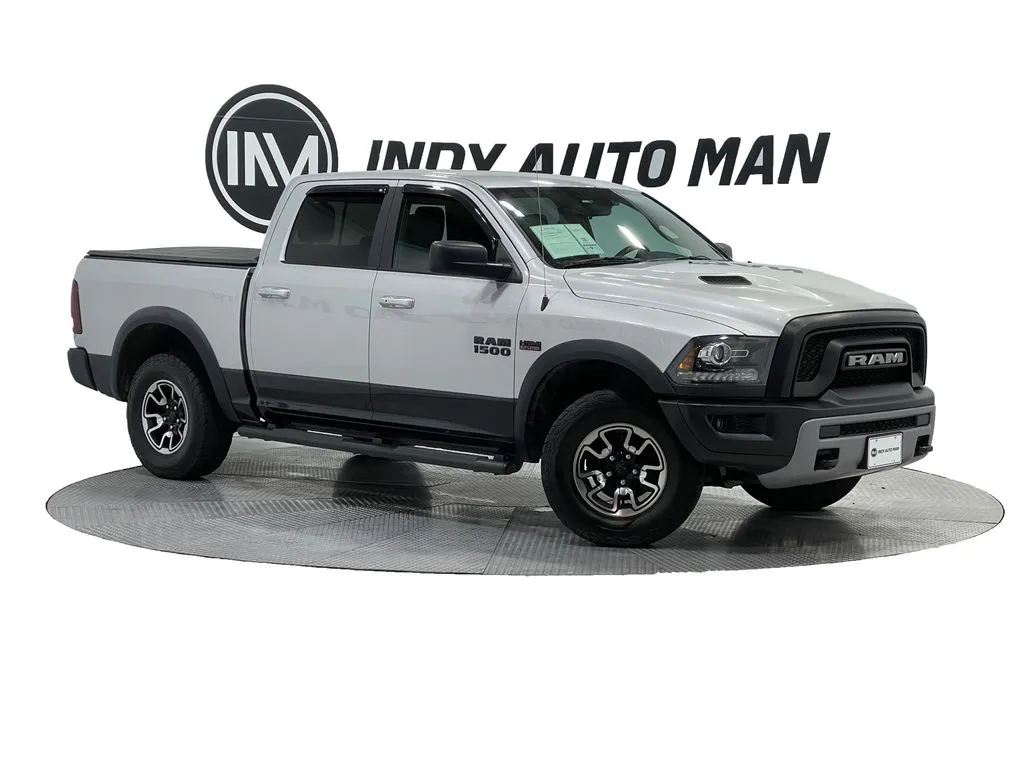Tire Numbers Guide

Numbers on Tires: What They Mean and Why They Are Important
Below, you will find the expert review from the service department of our Indianapolis dealership.
When buying new tires for your car, you need to pay close attention to the labeling. Otherwise, the wrong wheels may reduce the driving comfort of the vehicle and the safety of its operation.
Most Indianapolis drivers understand some inscriptions and numbers intuitively. But, sometimes, you should know what each number and letter means to get the best tires for the season or special road conditions. The Indy Auto Man team prepared this comprehensive guide to tire marking to help you make an informed decision.
The Meaning of Tire Numbers

On American tires, you can find two different types of labeling that differ from each other.
Consider the first marking: LT 235/75 R15 or P 195/60 R 14. The size is preceded by the letters: LT on tires for light trucks and P on passenger car tires.
The first digit of 235 mm is the tread width. What does the second number on a tire label mean? It shows the relationship between tread height and tire width. The wheel will cling to the coating perfectly if the value of this index is high. Most often, drivers call this parameter the height of the rubber profile.
The last number is the inner diameter of the tire in inches. Many Indianapolis car owners make the following mistake: they buy tires without considering that external parameters change.
So, the height of two wheels marked 185 65 R15 and 210 65 R15 will be different, but the landing diameter is the same. Due to small differences in the profile height and tire width in this example, it will be impossible to mount tires on a car.
There is also a second marking. It looks different: 31×10.5 R15. What do the numbers on tires with this marking mean?
- 31 – outer diameter of the tire;
- 10.5 – the width of the wheel;
- R – the tire has a radial design. The tire casing was originally produced with a diagonal construction, but this method has become obsolete;
- 15 – the inner diameter of the tire.
Additional Marking and Letters on the Sidewalls of Car Tires

| Load Index | Max load (lbs) |
| 75 | 852 |
| 78 | 937 |
| 81 | 1,019 |
| 84 | 1,102 |
| 87 | 1,201 |
| 90 | 1,323 |
| 93 | 1,433 |
| 96 | 1,565 |
| 99 | 1,709 |
| 102 | 1,874 |
| 105 | 2,039 |
| 108 | 2,205 |
| 111 | 2,403 |
| 114 | 2,601 |
| 117 | 2,833 |
| 120 | 3,086 |
| Speed Rating | Max speed (mph) |
| M | 81 |
| N | 87 |
| P | 93 |
| Q | 99 |
| R | 106 |
| S | 112 |
| T | 118 |
| U | 124 |
| H | 130 |
| V | 149 |
| W | 168 |
| Y | 186 |
| Temperature grade | Speed (mph) |
| A | Over 115 |
| B | 100 – 115 |
| C | 85 – 100 |
XL or Extra Load – this inscription on the wheels means they are reinforced. The load index is more than three units compared to standard tires of the same size. When you see a 91 load index on a tire, or the inscription XL, it means that this tire is designed for a load of not 1355 lbs, but 1477 lbs.
M+S, M&S (mud and snow) in most cases means that the tires are all-weather. You can also see this marking on summer wheels for SUVs. But in this case, they are not suitable for winter use. Winter tires have a different composition and a specific tread pattern. “M&S” means you have an off-road wheel in front of you.
AS or All Season – all-weather tires.
The snowflake icon means that the tires are designed for winter use. Don’t see this marking on the side of the tire? So, you can ride on such tires only in the summer.
Aquatred, Aqua contact, Rain, Water, Aqua, or an umbrella symbol means you see rain tires.
Outside and Inside lettering indicates that these are asymmetric tires. You should be extremely careful when installing them on the car because they have an outer and inner side.
RSC, RunFlat – even if a puncture occurs, you can continue driving at speeds up to 50 mph. These tires allow you to keep going for 30-90 miles after the pressure drops completely. Depending on the manufacturer, the marking may vary slightly, for example, Continental SSR, Bridgestone RFT, Nokian Run Flat, Goodyear RunOnFlat, and Michelin ZP.
A rotation or an arrow icon on the side of the tire means it is directional. When mounting it, you should consider the wheel rotation direction, which is indicated by the arrow.
Max Pressure is the highest allowable pressure in the wheel, while Max Load is the maximum load capacity for which the tire is designed.
The letter after the Max load (M, N, P, Q, R, etc.) is a speed rating, indicating the maximum speed the tire can handle.
RF, Reinforced (for example, 195/70 R15RF) means the tire has six layers. When the rubber has the letter C at the end of the marking (for example, 195/70 R15C), it has eight layers.
Radial – the tire has a radial design. If there is the word “Steel”, the tire is reinforced with a metal cord.
The letter E, circled – the rubber meets European ECE standards. The inscription DOT means that the tire meets the American quality standard.
Temperature (A, B, or C) – shows how rubber is resistant to high temperatures when driving at maximum speed.
TWI stands for Tread Wear Induration. Most often, next to this inscription, you will see the arrow sign. The symbols are distributed in 6-8 areas throughout the wheel. They indicate the minimum tread depth at which the tire is allowed to operate. The passenger wheel wear indicator protrudes 1.6 mm (0.06 inches). The wear indicator is located in a recess in the tread, most often in the grooves to drain water.
DOT – manufacturer’s address code, coded tire size, certificate, and the week and year the tire was manufactured.
What Do the Colored Labels on Tires Mean?
We have analyzed what the numbers mean on different kinds of tires. However, when choosing tires in Indianapolis, you can also find symbols of four colors: red, yellow, white, and blue.
Typically, color marking carries hands-on information for auto mechanics who repair wheels.
The most commonly used label is white. For example, you might see icons in a small circle. The white marking is applied by a specialist when checking the compliance of the tire with quality standards. If you see this symbol, you can be sure that the technical control department has inspected the product.
The red marker has two meanings:
- The tire was installed at the factory.
- A small red circle indicates that the tire is the heaviest in this place.
The yellow marker means the lightest area of the tire. It is this part that should be placed opposite the spool. This marking helps tire fitters to balance the wheel.
What do the colored stripes on tires mean? They assist warehouse workers who sort tires by manufacturer and size. Also, such strips show the buyer that the tire is brand new and has not been used. Over time, due to constant use, the colored stripes wear out on the asphalt.
Should I Always Replace All 4 Tires at Once?
The general recommendation is to replace all tires at the same time. The tires spin independently, and different wear, tread depths, or other parameters can cause discrepancies in their rotation speed. This may damage the drivetrain and affect an indirect TPMS.
However, sometimes it is OK to change two tires only if they wear out faster. In this case, it is vital to have the partially worn tires installed on the back, and new ones – on the front, even on FWD vehicles.
Do Bigger Tires Mean More Speed?
Bigger tires can provide you with faster handling but slower acceleration. Moreover, each vehicle has tire requirements, and the larger wheel diameters can disturb proper driving. You should always weigh the pros and cons of going out of standards and consult specialists to avoid risks.
If your car needs new tires and you are unsure which to choose, visit the Indy Auto Man Service station in Indianapolis. Our skilled technicians will inspect your vehicle, give their honest opinion on the tire condition and advise the right wheels for the upcoming season.










